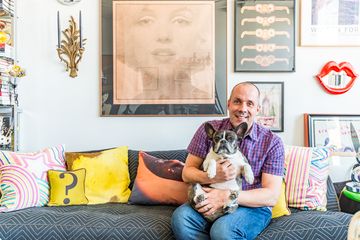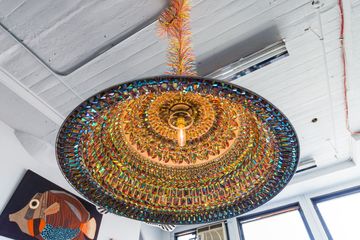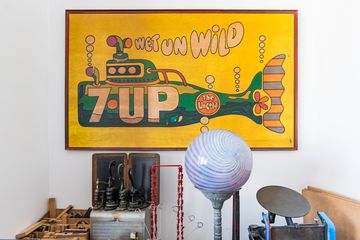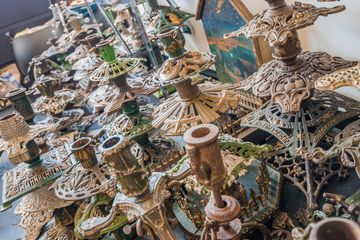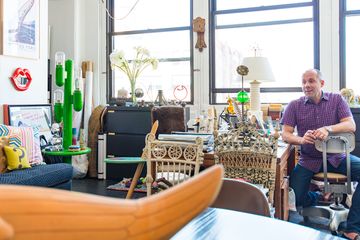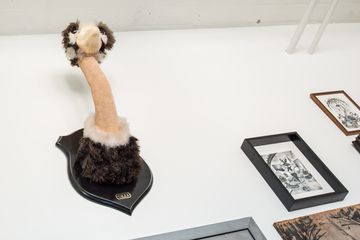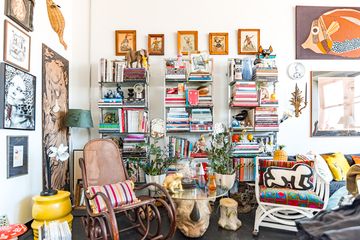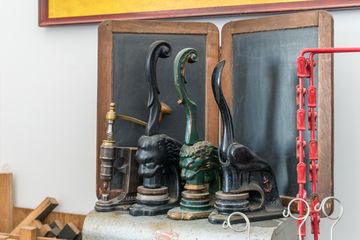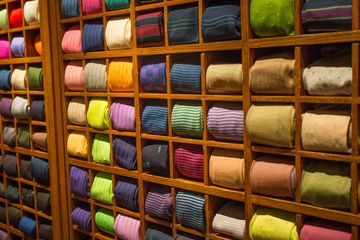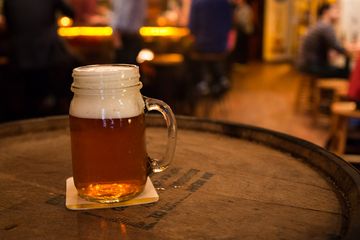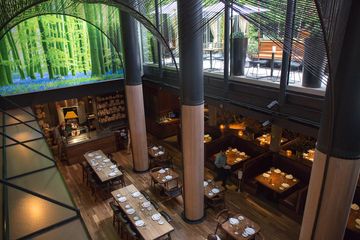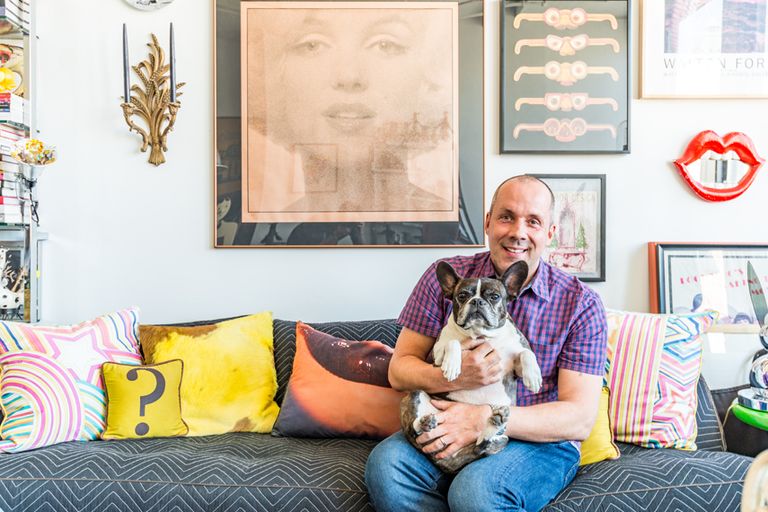
I first met Harry Heissmann at Philip Colleck during the winter holidays, where he was selling his antique Christmas tree stands. The ornate stands, which date back to a time when German families would place their small Christmas trees on tabletops, are a large part of the reason why Harry is in New York today. While living in Germany, where he grew up, one of his best friends had an antique shop in Munich. Henry reminisced about joining him at 4am and going to the Bavarian flea markets with flashlights to find things that caught their eye. “I was always a Christmas nut,” Harry admitted, and so thanks to these early morning excursions, he soon amassed close to three hundred tree stands. Harry eventually decided to sell all but twenty of them and use the money to move to New York. Many years later, a writer for the New York Times convinced him to resume collecting the pieces. Knowing this background, I expected to find just an array of these stands when Harry invited me to his office on West 45th Street. However, I was deeply mistaken and completely blown away by what I found.
Stepping into Harry Heissmann’s space is like taking a trip down the rabbit hole…if that rabbit had an impeccable interior designer. A stuffed animal ostrich head hung above the entrance, hunting-trophy-style, and multicolored lighting fixtures surrounded the room. Every time I turned my head, I saw something new, and judging from Harry’s reactions, there was a story behind each piece. The glittering central light (which Harry calls his “magic lamp,” due to its ability to make anything beneath it look amazing) was made by his friend, who also designed the bedazzled clip lights around the studio. Harry then told us, that these were designed to be ladies’ fascinators, complete with a portable battery pack.
Harry’s office is different from other interior design studios in that he also likes to use it as a shop. By placing the eclectic, eccentric pieces throughout the room, he can show his customers what he can do with each item. “I can perform magic tricks,” he said with a grin.
Speaking of magic, I found myself looking at a metallic ball on a stand, which Harry said was a gazing ball, a type of decoration originally used in German houses to ward away witches. There was also a cactus sculpture in a smooth, curvy style reminiscent of the 1970s, which had yet another fascinating story behind it: Harry found the piece online after falling in love with a similar, expensive piece at a New York antique shop. The owner of the cactus, who lived in Chicago, decided to drive to New York to drop the sculpture off, for no clear reason, charging him only $50.00. As for more classic pieces, Harry pointed out a Murano vase that was given to him after a client, for whom he had designed many custom chandeliers, invited him to Venice to see the prototypes formed from his designs.
Harry emphasized that he could design for any style. He has worked for clients who prefer classic, traditional décor as well as those who value vibrant color and originality. He calls his work “client-centric,” always deferring to the whims and wishes of his customers, rather than his own fancies. “I pride myself on providing great customer service - I have more education that most people,” Harry humbly stated, and yet he still insists on putting his client's opinion first.
I continued my tour of the room, finding prototypes of little German terra cotta garden stools for children in the shape of mushrooms, toadstools, and logs; pineapple ice buckets, a rhinoceros coffee table, and a snail magazine stand. Though there were many animals, flora were represented along with fauna: “I’m obsessed with flower lamps right now.” He then showed us not only light fixtures in crazy petal and leaf shapes, but also hyacinth vases, a Victorian fad in which the bulbs were placed in the bottom of colorful glasses before a cone was set on top to help them grow. (Harry's grandmother used to grow hyacinths in this fashion when he was a child)
Most of these items are for sale. There are a few pieces in the office, however, that are not on the market. As an example, Harry picked up the pencil holder on his desk. The simple glass receptacle belonged to his former employer, Albert Hadley. “He made my career,” Harry said somberly. After Harry graduated from the Academy of Fine Arts in Munich, he moved to New York in 1995 and began working for Albert Hadley, the renown interior decorator. Harry admitted, “Mr. Hadley shaped my inner sense of design.” Most mornings during the nine years that Harry worked for Albert, the two men would race each other to the office, each trying to be the earliest one in. Every time Harry looked across the desk at Albert, he saw that blue pencil cup. When Albert passed away in 2012, Harry bought the cup from One King’s Lane.
Since starting off on his own, Harry has tried to “build a circle of friends.” When he needs specific designs, favors, or materials, he will call on his network of close acquaintances to help him, and in turn, he tries to connect his friends to one another. For example, he pointed out a selection of illustrations that a friend did, depicting Harry’s showrooms. One of the drawings, done around Easter, has a giant chocolate bunny coming out of the egg. When it came time to create the centerpiece for his friend's exhibition, Harry sent the drawing along to Alpha Workshops, a company that employs HIV-positive artists, and they made a perfect 3D rendering of the bunny. It was the first time his friend had seen his work done in three dimensions. Thanks to Harry’s efforts, two sides of his artistic circle were brought together. Judging from my conversation with Harry, he derives tremendous pleasure from working and connecting with others. in fact, he is looking forward to teaching his first college level course in the fall semester of 2016.
